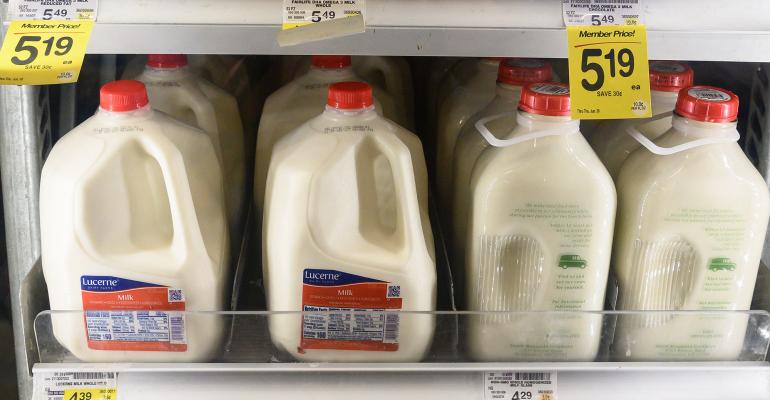(Bloomberg Opinion) -- A consensus has formed that the Federal Reserve waited too long to start tightening money. Ben Bernanke, the former Fed chairman, has said so. Janet Yellen, another former chairman who now serves as Treasury secretary, has implicitly agreed, saying that she, like many other observers, underestimated how high inflation would run for how long.
But Fed watchers are still disagreeing about another question: Is the central bank tightening too much and too fast now?
Josh Bivens, the head of research at the Economic Policy Institute, a progressive think tank, is worried. “If we have a recession because the Fed moves too fast and too high on interest rate hikes, that will be a clear mistake,” he recently told Huffington Post.
Washington Post columnist Megan McArdle notes that the last time the Fed took on high inflation, when Paul Volcker led it in the early 1980s and had to get inflation down from double digits, it won only at the cost of a brutal recession. The costs of a recession are so high that she thinks the Fed should probably “stabilize inflation and then lower it gradually” — if that’s possible.
That preference, like the concern underlying it, is reasonable, and how fast the Fed should raise rates is a matter of degree and judgment. But comparing our circumstances to Volcker’s should push the Fed toward acting faster.
Volcker became Fed chairman in August 1979. But it wasn’t until 1981 that the central bank made a sustained break with the easy-money policies of the preceding years. Inflation (measured by personal consumption expenditures) hit a peak in mid-1981, as did the growth rate of spending throughout the economy. The unemployment rate was already at 7.2% by that point. Volcker’s tight money induced a recession that pushed it up an additional 3.6%.
Today the unemployment rate is 3.6% total. Prime-age labor force participation is higher than it was then, too. The labor market is thus in much better shape to handle monetary tightening.
There was more inflation to wring out of the economy back then, too. By 1981, inflation had been high for years. The annual rate had been above 8% for a decade. Today’s inflation hasn’t been as persistent.
This means it isn’t nearly as entrenched. The difference in yields between bonds that are adjusted for inflation and those that are not implies that market participants predict inflation will run at an average below 2.5% during the period from six to 10 years from now. Inflation expectations are, as central bankers say, “well-anchored.”
That’s good news, but its implications are ambiguous. If you’re relatively dovish about inflation, you could look at those low expectations and say there’s no cause for alarm and no need to take drastic action. But the other way of looking at it is that low inflation expectations reduce the price of fighting inflation.
In a world where everyone expects prices to rise about 10% a year, fighting inflation means upending those expectations. Employees get used to needing large raises just to keep up with the cost of living. Employers either have to disappoint them or see their real, inflation-adjusted costs spike. That process of adjustment is a major reason that fighting inflation so often involves tolerating higher unemployment.
When inflation expectations are subdued, on the other hand, the adjustment need not be so painful. That’s our relatively happy situation now, in spite of our justifiable complaints about the post-pandemic inflation. The Fed ought to bring expected inflation down a bit, and certainly to keep it from rising. It doesn’t need to bring it down dramatically.
The costs of a relatively quick restoration of monetary stability thus look low. Putting off that restoration, on the other hand, risks letting those expectations drift upward. We’re not in 1981, having to choose between continued high inflation and a severe recession. We’re in 1968, deciding whether to halt inflation in its early stages so that we never reach 1981.
Some Fed policy makers appear to be thinking roughly along these lines at the moment. Lael Brainard, the Fed’s vice chair, says lower inflation is currently job one and the economy “has a lot of momentum.” Mary Daly, head of the San Francisco Fed, has spoken similarly in recent days.
But there are also signs that central bankers are still too hesitant about getting inflation under control. The Fed’s latest projections show inflation running above 2% through 2024 and then settling at 2% over the long run. That implies that total dollar spending doesn’t come back down to its pre-pandemic trajectory.
One way of interpreting those projections: The Fed doesn’t expect the Fed to tighten enough. Maybe it would have more confidence if it acted with greater speed.
More From Bloomberg Opinion:
- The More Inflation Sticks, the More Disappointment: John Authers
- Federal Reserve’s Mild Inflation Forecasts Need Explaining: Bill Dudley
- Memo to Fed: Hurry Up and Hike So We Can Slow Down: Daniel Moss
To contact the author of this story:
Ramesh Ponnuru at [email protected]
© 2022 Bloomberg L.P.





